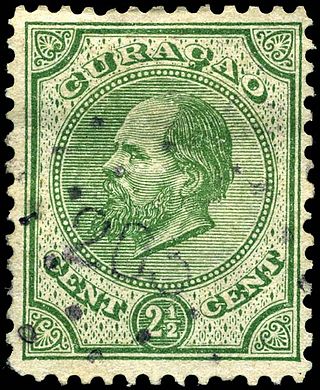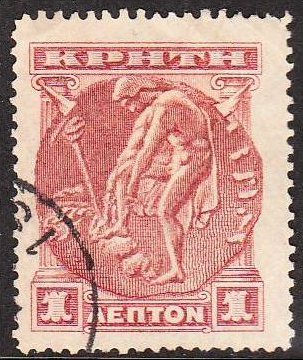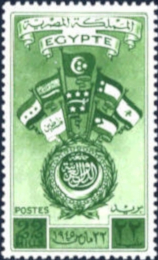
A postmark is a postal marking made on an envelope, parcel, postcard or the like, indicating the place, date and time that the item was delivered into the care of a postal service, or sometimes indicating where and when received or in transit. Modern postmarks are often applied simultaneously with the cancellation or killer that marks postage stamps as having been used. Sometimes a postmark alone is used to cancel stamps, and the two terms are often used interchangeably. Postmarks may be applied by handstamp or machine, using methods such as rollers or inkjets, while digital postmarks are a recent innovation.

A first day of issue cover or first day cover (FDC) is a postage stamp on a cover, postal card or stamped envelope franked on the first day the issue is authorized for use within the country or territory of the stamp-issuing authority. Sometimes the issue is made from a temporary or permanent foreign or overseas office. Covers that are postmarked at sea or their next port of call will carry a Paquebot postmark. There will usually be a first day of issue postmark, frequently a pictorial cancellation, indicating the city and date where the item was first issued, and "first day of issue" is often used to refer to this postmark. Depending on the policy of the nation issuing the stamp, official first day postmarks may sometimes be applied to covers weeks or months after the date indicated.

A cancellation is a postal marking applied on a postage stamp or postal stationery to deface the stamp and to prevent its reuse. Cancellations come in a huge variety of designs, shapes, sizes, and colors. Modern cancellations commonly include the date and post office location where the stamps were mailed, in addition to lines or bars designed to cover the stamp itself. The term "postmark" refers specifically to the part that contains the date and posting location, but the term is often used interchangeably with "cancellation" as it may serve that purpose. The portion of a cancellation that is designed to deface the stamp and does not contain writing is also called the "obliteration" or killer. Some stamps are issued pre-cancelled with a printed or stamped cancellation and do not need to have a cancellation added. Cancellations can affect the value of stamps to collectors, positively or negatively. Cancellations of some countries have been extensively studied by philatelists, and many stamp collectors and postal history collectors collect cancellations in addition to the stamps themselves.

An overprint is an additional layer of text or graphics added to the face of a postage or revenue stamp, postal stationery, banknote or ticket after it has been printed. Post offices most often use overprints for internal administrative purposes such as accounting but they are also employed in public mail. Well-recognized varieties include commemorative overprints which are produced for their public appeal and command significant interest in the field of philately.
Franking comprises all devices, markings, or combinations thereof ("franks") applied to mails of any class which qualifies them to be postally serviced. Types of franks include uncanceled and precanceled postage stamps, impressions applied via postage meter, official use "Penalty" franks, Business Reply Mail (BRM), and other permit Imprints (Indicia), manuscript and facsimile "franking privilege" signatures, "soldier's mail" markings, and any other forms authorized by the 192 postal administrations that are members of the Universal Postal Union.

This is a survey of the postage stamps and postal history of the postal areas Netherlands Antilles as well as its predecessor Curaçao. The area consisted of the islands Bonaire, Saba and Sint Eustatius as well as Sint Maarten, Curaçao and Aruba.

A postage meter or franking machine is a mechanical device used to create and apply physical evidence of postage to mailed items. Postage meters are regulated by a country's postal authority. A postage meter imprints an amount of postage, functioning as a postage stamp, a cancellation and a dated postmark all in one. The meter stamp serves as proof of payment and eliminates the need for adhesive stamps.

Aden is a city in southern Yemen. Aden's location made it a popular exchange port for mail passing between places around the Indian Ocean and Europe. When Captain S. B. Haines of the Indian Marine, the East India Company's navy, occupied Aden on 19 January 1839, mail services were immediately established in the settlement with a complement of two postal clerks and four letter carriers. An interim postmaster was appointed as early as June 1839. Mail is known to exist from 15 June 1839 although a regular postmaster was not appointed until 1857; one of the officials of the Political Agent or the civil surgeon performed the duties of postmaster for a small salary.

The postal history of Malta began in the early modern period, when pre-adhesive mail was delivered to foreign destinations by privately owned ships for a fee. The earliest known letter from Malta, sent during the rule of the Order of St John, is dated 1532. The first formal postal service on the islands was established by the Order in 1708, with the post office being located at the Casa del Commun Tesoro in Valletta. The first postal markings on mail appeared later on in the 18th century.
The postage stamps and postal history of Palestine emerges from its geographic location as a crossroads amidst the empires of the ancient Near East, the Levant and the Middle East. Postal services in the region were first established in the Bronze Age, during the rule of Sargon of Akkad, and successive empires have established and operated a number of different postal systems over the millennia.

The Palestinian National Authority began in 1994 to issue stamps and operate postal services as authorized by the Oslo Accords.

Mobile post offices deliver mail and other postal services through specially equipped vehicles, such as trucks and trains.

The postal history of Turkey and its predecessor state, the Ottoman Empire, dates to the 18th century when foreign countries maintained courier services through their consular offices in the Empire. Although delayed in the development of its own postal service, in 1863 the Ottoman Empire became the second independent country in Asia to issue adhesive postage stamps, and in 1875, it became a founding member of the General Postal Union, soon to become the Universal Postal Union. The Ottoman Empire became the Republic of Turkey in 1923, and in the following years, its postal service became more modernized and efficient and its postage stamps expertly designed and manufactured.

Nepal has a long postal history. The modern form of postal service was started by the Rana Prime minister Ranaudip Singh in 1878. He established the first post office which was named Nepal Hulak Ghar. In 1881, the first postal stamp was issued. As of 2020, about 1367 types of postal stamps have been issued. Currently, the postal service is regulated by the Postal act of Nepal. Nepal Post, locally known as Hulak Sewa(Nepali: हुलाक सेवा विभाग) or Daak Sewa(Nepali: डाँक सेवा) under the Ministry of Information and Communications is responsible for the postal service in Nepal.

This is a survey of the postage stamps and early postal history of Sudan. Sudan was governed by the United Kingdom and Egypt from 1898. Independence was proclaimed on 1 January, 1956, and independent Sudan became a member of the Universal Postal Union (UPU) on 27 July 1956.

This is a survey of the postage stamps and postal history of Saudi Arabia, formerly known as the Kingdom of Hejaz and Nejd until 22 September 1932. The Kingdom of Hejaz and Nejd had been separate countries until the mid-1920s.

This is a survey of the postage stamps and postal history of Crete.

This is a survey of the postage stamps and postal history of Egypt.

This is a survey of the postage stamps and postal history of Ethiopia. Long an independent state in Africa, messages were originally carried by couriers called méléktegnas, who held the letters attached to a stick.

British post offices in Crete provided the postal service in the territory of the island of Crete. Stamps inscribed in Greek were used in the British sphere of administration (Heraklion) during the Great Powers occupation of the island in 1898–1899.


















